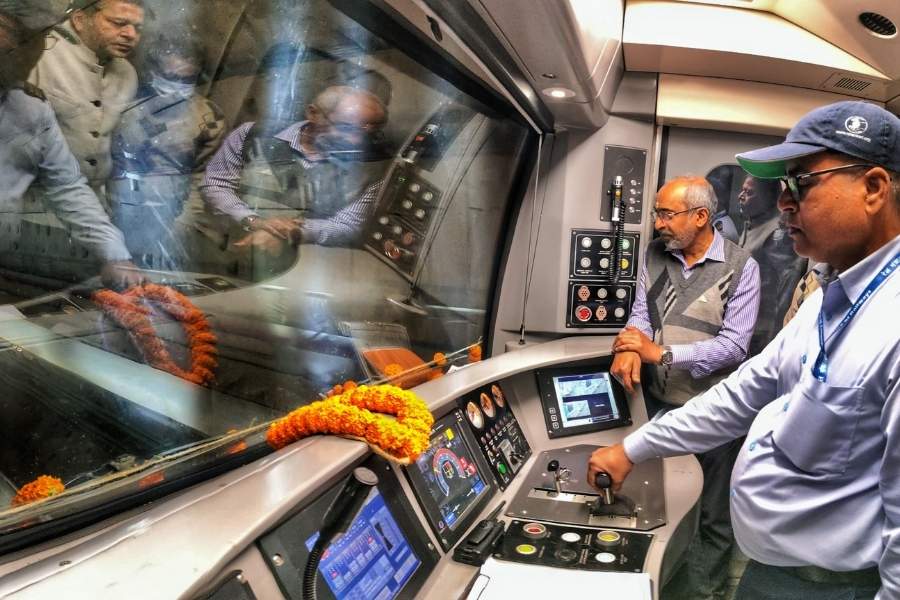
After a hiatus of 30 years, Thangaat made a spectacular return, reminding Kolkata about the magic of Gujarat’s folk dances. Thousands of people thronged Kala Mandir on October 1 and 2 to witness 90 performers breathe life into 10 unique dance forms. The evening was a tribute to Hemanshu Dave, one of the pioneers of Kolkata’s Raas Garba scene, who passed away during the pandemic. “In Gujarati, ‘thangaat’ is when a peacock opens its feathers and begins dancing during the first rain. This is a metaphor for how kids in Gujarat begin dancing after grasping the very first beat,” said Nishant Dave, one of the core organisers and Hemanshu’s son
Photos: Amit Datta
The event began with ‘Madi Taru Kanku Kharyu’ and ‘Dakla’, a representation of the complementary-yet-contrasting energies of Durga and Kali, two of the most revered goddesses in Gujarat and West Bengal. “All of us have positive divine energy within us, and in Gujarat, we invoke that energy as a means of worship through dance,” said veteran dancer Shila Mehta, who conceptualised and choreographed the entire show

Mehta then took over the proceedings herself with ‘Nimitta Amba Shikhandi’, her stirring interpretation of the conflict between Bhishma Pitamaha and Shikhandi. “I wanted to add subtext to the literature through my love for ‘Charani Kathak’, and convey the complexity of gender as depicted in the Mahabharata,” she said

Audiences were then captivated by ‘Arisso’, named after a poem by legendary Gujarati lyricist, Avinash Vyas. The performance used the mirror as a motif for a young woman’s devotion to Krishna. “The woman is getting ready, thinking that she is alone at home. However, she can feel Krishna watching her through her mirror,” Mehta said

The programme also paid homage to the yesteryear tradition of Sheri Garba through ‘Amba Abhay Pad’, where women sang invoking divine blessings. “While garba has now become a part of huge banquet halls with ticketed entry, we grew up playing in our neighbourhoods or at Maidan, where everyone would dance around Mataji’s idol and get their energy from her. We wanted to remind everyone of those days,” Mehta explained

The final performance, titled, ‘Haiye Rakhi Haam’ was an energetic nod to the ‘Hudo Raas’ style of Garba emerging from the Padhar community, traditionally played by youngsters in fairs to attract a life partner. “It was said that the more power men put into their claps, the more attractive they would appear,” Mehta chuckled









